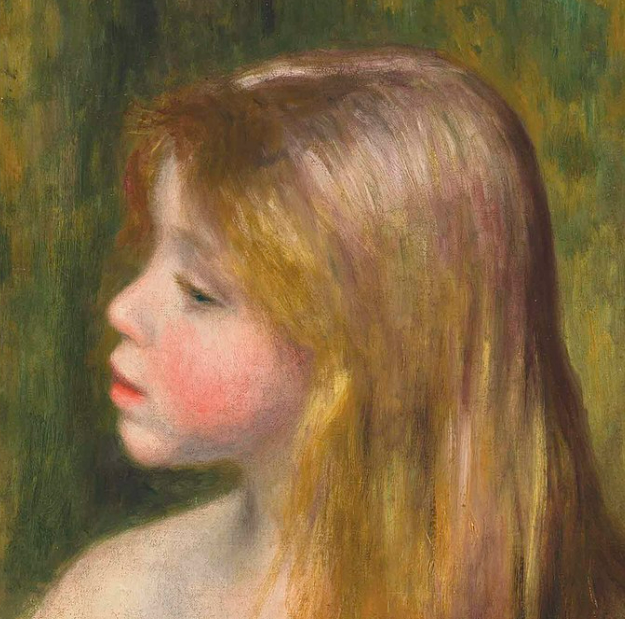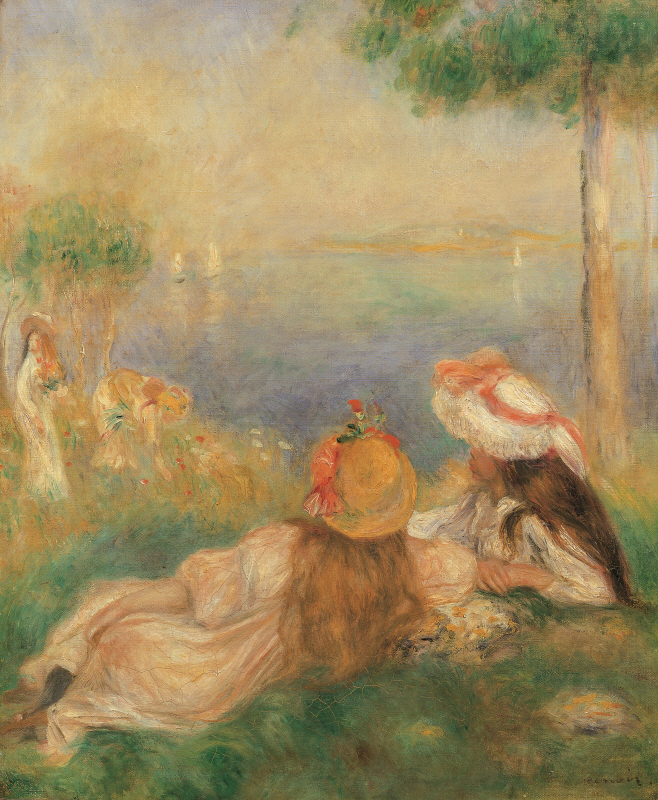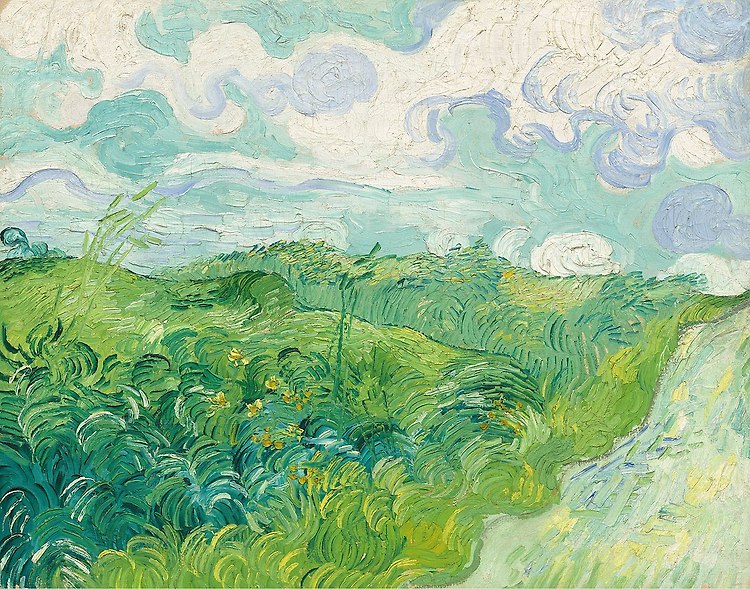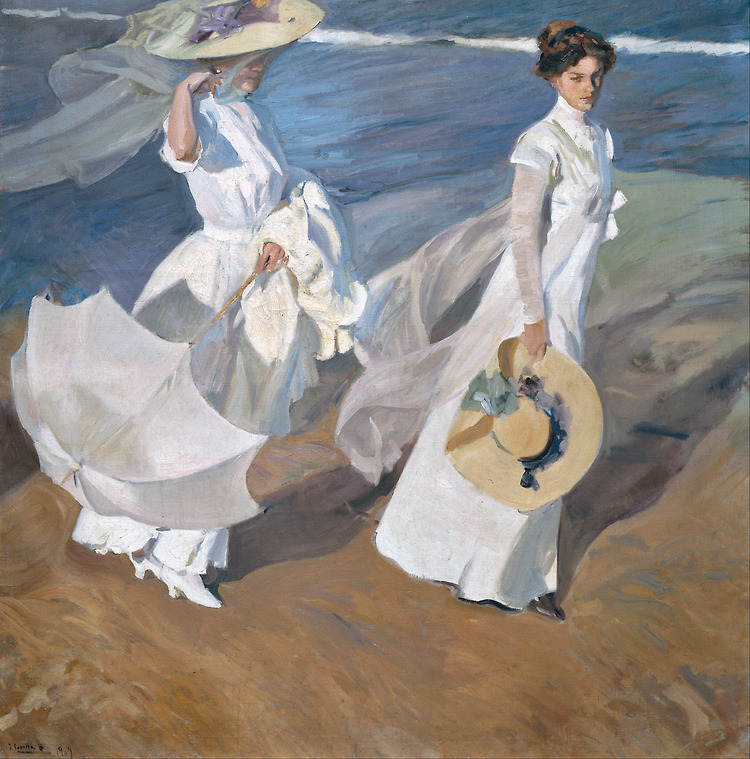
This very late work was painted in early July 1890, just a few weeks before Van Gogh's death. It was one of several paintings of wheat fields that he made in Auvers-sur-Oise, in an unusually elongated double-square format: other examples include Wheatfield with Crows (F779) and Landscape at Auvers in the Rain (F811).
In a letter of around 10 July 1890, Van Gogh wrote to his brother Theo and sister-in-law Jo that he had already painted three large canvases at Auvers since visiting them in Paris on 6 July. One of the three paintings was

Daubigny's Garden (F777). The other two he described as
"immense stretches of wheatfields under turbulent skies"

– probably this painting and Wheatfield with Crows – in which he was
"trying to express sadness, extreme loneliness" (immenses étendues de blés sous des ciels troublés … chercher à exprimer de la tristesse, de la solitude extreme).
He added that he intended to take them to Paris as soon as possible, as
"these canvases will tell you what I can’t say in words, what I consider healthy and fortifying about the countryside" (j'espère vous les apporter à Paris le plus tôt possible … ces toiles vous diront ce que je ne sais dire en paroles, ce que je vois de sain et de fortifiant dans la campagne).
Van Gogh shot himself on 27 July and died in Auvers on 29 July 1890, by which time the three paintings were already with Theo van Gogh in Paris. #




